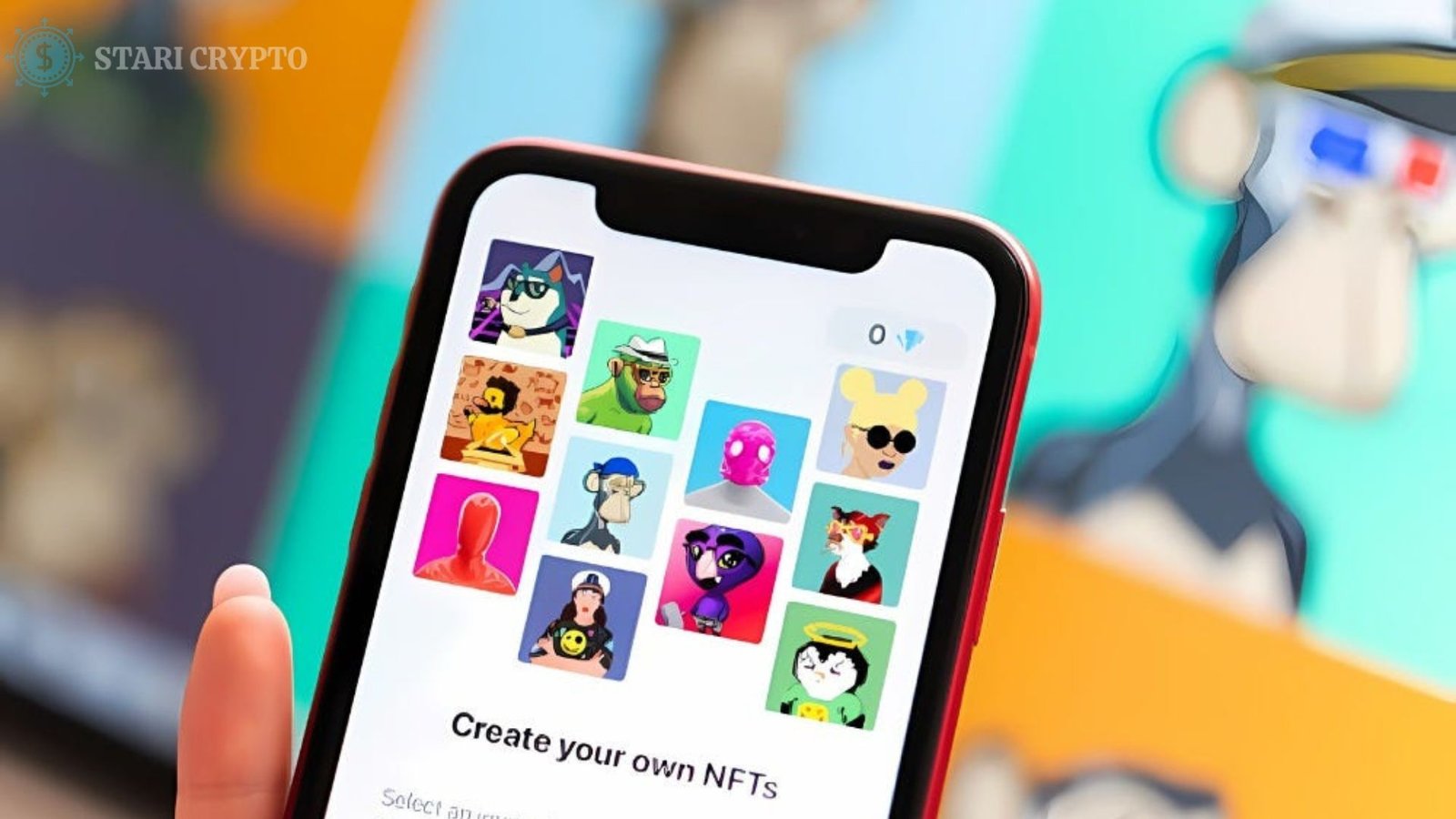Rise of NFTs: Digital ownership is changing rapidly due to Non-Fungible Tokens. Blockchain technology verifies ownership and provenance of NFTs. This has opened a market for digital art, collectibles, and other rare goods that were previously untradeable. NFTs allow authors to monetize their digital works and collectors to hold rare and valuable digital items. The art world has seen NFTs sell for millions of dollars at auction, a technology that could change digital ownership.

This essay will discuss NFTs and digital ownership, including the possibility of new marketplaces, the difficulty of regulating this new environment, and the future of art and collectibles. If you need help developing an NFT marketplace, email us. We will discuss NFTs, blockchain, and cryptocurrencies as a form of exchange in this new digital world. Explore the intriguing and fast-changing world of NFTs.
What are NFTs?
Non-fungible tokens, or NFTs, have been in the spotlight lately for their innovative capacity to prove digital ownership of ephemeral assets like artwork and collectibles. The blockchain is a distributed and unchangeable record that contains one-of-a-kind digital assets called NFTs. For creators seeking to demonstrate ownership of their digital creations, NFTs are a valuable tool because they cannot be cloned or recreated, unlike traditional ownership models. Collectors and investors are smitten with NFTs since each one has unique metadata that makes it stand out.
Also Read: Describe NFTs and how artists make millions selling them.
The barriers between conventional banking and the realm of blockchain technology become even more porous when NFTs are usually bought using Bitcoin. The buyer of an NFT has complete authority over it once they’ve paid for it, including the power to sell, trade, or transfer it to anybody else. Despite the novelty of NFTs, they have had a major influence on the art market, with a number of high-profile sales reaching multimillion-dollar sums. Virtual real estate, music, and tweets are just a few examples of the numerous digital commodities that have been documented as having been owned by individuals using NFTs.
What NFTs Tell Us About Digital Ownership
Blockchain-based NFTs create unique, verifiable ownership records for art, music, virtual real estate, and collectibles. NFTs outperform digital ownership structures. Blockchain technology reduces NFT fraud and counterfeiting by verifying digital asset ownership and validity. After generating an NFT, the blockchain records ownership irrevocably. NFTs may boost digital asset values, aiding creators and collectors. Partitioned ownership allows digital asset exchange, investment, and collaboration. Digital currencies simplify royalty payments and more using smart contracts. Expand digital asset access globally to expand producer and collector markets. NFTs empower individuals by democratizing digital asset ownership. Due to decentralized ownership, NFTs provide authors and collectors more control.
Potential Impact on Non-Art and Collectibles Industries:
Much more than only artwork and antiques are impacted by NFTs. The banking, real estate, and gaming industries may be impacted by NFTs. New forms of investment and expansion are made possible by the validation of virtual real estate ownership in online games through NFTs. Real estate transactions including NFTs can be more transparent and less susceptible to fraud because they can prove ownership. By introducing new digital asset investment options through NFTs, blockchain technology can be integrated into current financial markets.
The Future of Art and Collectibles
A new age for art and collectibles has dawned because of blockchain technology, which is reshaping several industries. One way that artwork and collectibles can be digitally owned and identified is through the use of non-fungible tokens (NFTs). As a result, artists, collectors, and investors now have access to thrilling new opportunities.
Beeple, Grimes, and Kings of Leon are among the well-known creators and artists who have adopted NFTs. “Every Day: The First 5000 Days,” a digital artwork by Beeple, fetched $69 million at an auction hosted by Christie’s. The newest album by Kings of Leon was published as an NFT with exclusive extras for buyers. Also, NFT-based collectibles have been trending on platforms like Rarible and NBA Top Shot, with some products fetching hundreds of thousands of dollars.
NFTs could democratize art and collectibles:
The possibility that NFTs may make the art and collectibles market more accessible to a wider audience is one of its major advantages. Traditional artwork and collectibles are typically only accessible to a wealthy few. On the other hand, NFTs make it possible to buy and sell digital artwork and collectibles under fractional ownership. As a result, more people will be able to invest, which may increase the variety of the art and collectibles markets.
Critiques and obstacles to NFT adoption in art:
Although NFTs have the ability to completely transform the art and collectibles market, there are also concerns and obstacles to their widespread use. Some think NFTs are bad for the art market because they keep art commodified. Since a lot of energy goes into making and selling NFTs, there are also concerns about their effect on the environment. Notwithstanding these obstacles, the application of NFTs to the art and collectibles market is a promising new direction with the ability to revolutionize the sector. The continued influence of NFTs on the art and collectibles market is something to see as technology advances and is made more widely available.
How Blockchain and Crypto Affect NFTs
Blockchain technology is an ideal method for digital transactions since it is decentralized, secure, and applicable everywhere. An intriguing use case is non-fungible tokens (NFTs), which allow for the transparent and safe tracking of digital asset ownership and origin. NFTs are one-of-a-kind digital assets that may stand in for anything from art and collectibles to tweets. Blockchain technology, which provides an immutable and immutable record of ownership and transfer, is commonly used to produce these.
New tokens (NFTs) made possible by blockchain technology allow for unprecedented digital ownership. Particularly in the realm of digital art, where the dangers of theft and plagiarism are high, they enable creators and collectors to demonstrate ownership and originality.
Cryptocurrencies and Their Function in NFTs
NFTs need cryptocurrencies to exchange unique digital assets. NFTs are often traded using blockchain-based cryptocurrencies like Bitcoin or Ethereum. Cryptocurrencies make NFT transactions faster and more efficient. No banks or other financial organizations are needed for fast, safe transactions.
Blockchain’s NFT Ownership and Verification Benefits Transparency and immutability are major advantages of blockchain technology for NFT ownership and verification. Digital asset ownership and transfers are easy to track on a public ledger. Transparency prevents fraud and counterfeiting. Since each NFT is unique on the blockchain, it’s hard to copy an asset.
In summary
Finally, the NFT industry has been utterly transformed by the merging of blockchain technology with cryptocurrency. NFTs have changed digital ownership and provenance, giving artists and producers more autonomy and better commercialization options. Coincident with blockchain technology’s immutability and transparency, which assures NFTs’ validity and singularity, cryptocurrencies offer a decentralized payment system without middlemen and lower transaction fees.
The art and collectibles market is one of several NFT uses. They can be used in gaming, real estate, and identity verification. Tokenizing assets and establishing digital ownership might disrupt many businesses, giving startups and innovators new opportunities. Blockchain technology and cryptocurrencies, which power NFTs, will transform the digital world. FortySeven helps clients with Web3 projects of various sizes and complexity. Contact us for a free consultation.
Also Read: Staricrypto.com

















